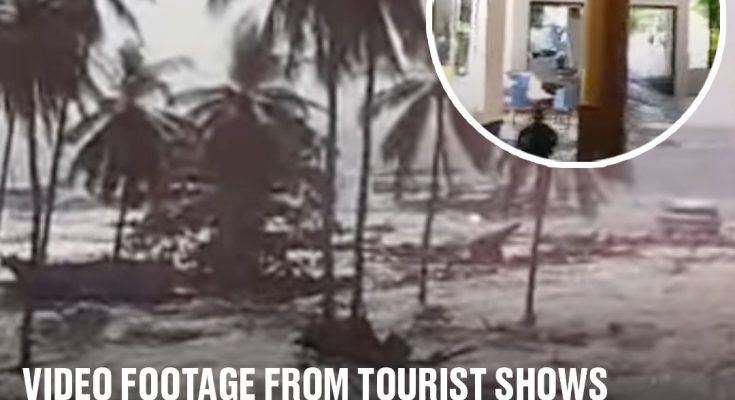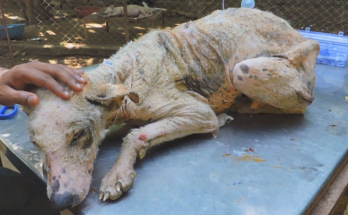Rare footage from a tourist shows the devastating aftermath of the 2004 Boxing Day tsunami disaster.
It was around 228,000 people that died as a result of the 9.1 magnitude earthquake and giant tsunami that bulldozed into Indonesian coastlines on 26 December 2004.
It was one of the largest natural disasters ever recorded, and had devastating consequences for several countries.
Over two decades on from the disaster, many of the towns and villages have been rebuilt or totally transformed.
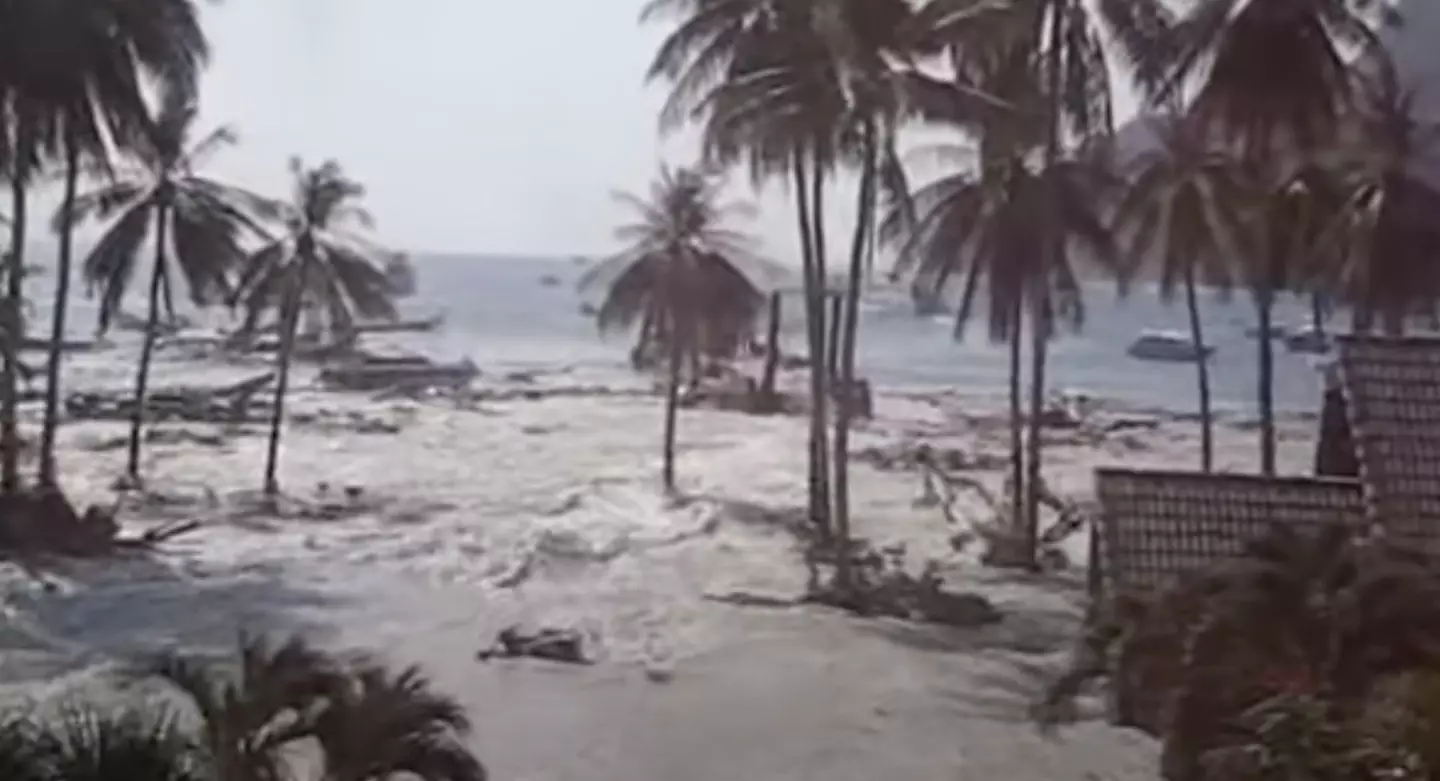
The 2004 tsunami was one of the largest that has ever been recorded. (YouTube/@kallewidelius9395)
The estimated total cost of the damage from around Indonesia was $10 billion (£6.4 billion).
It was thought that 141,000 houses were destroyed, which accounted for 47 percent of the entire damage.
Footage from a tourist who managed to survive the enormous waves reveals the devastating impact of the natural disaster.
One of the most badly affected parts was an island off Thailand called Koh Phi Phi, which is where the video was taken.
The small island was completely vulnerable, and was attacked by the giant waves from every angle.
The video shows water pouring into hotels, with people running up the stairs to the highest point for protection.
The tourists were able to film the devastation from a window on a high floor, and everything below appeared to be totally submerged.
Houses were flooded, buildings collapsed, as the waves reached a hight of 65-100ft in some places.
For many, they had no chance of escaping to safety.
Joe Giardina was on holiday at the time of the disaster, with his wife, Ivana, and son, Paul, in Phuket.
Speaking to ABC News, he said: “I said, ‘My God, look at that. That’s an extraordinary wave. It’s come up onto the footpath’, but it kept coming.
“I didn’t anticipate this thing to develop into a wall of water.
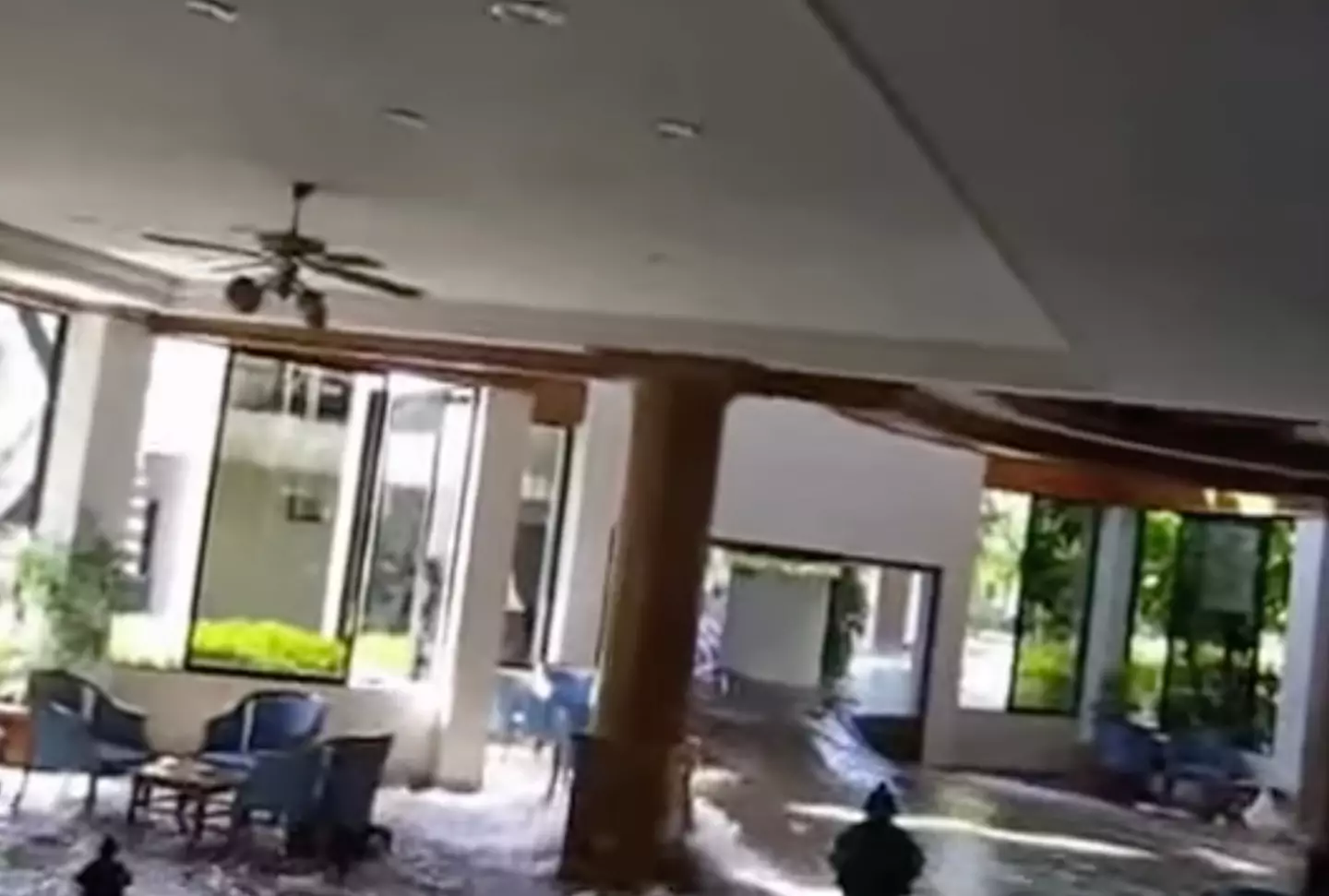
The hotel was flooded. (YouTube/@kallewidelius9395)
“You’re just an animal.
“You’re a creature at that moment paralysed by your fear.
“Everything just happened in the millisecond.”
An estimated 10,000 British tourists were affected by the tsunami, and 149 died.
A large majority were thought to be staying in beach resorts in Thailand and Sri Lanka.
Among the Brits who died was Sir Richard Attenborough’s 49-year-old daughter Jane Attenborough, and her 14-year-old daughter, who were holidaying in a resort when disaster struck.
In the twenty years after the devastating tsunami and earthquake, it’s been reported there are almost 400 victims that remain unidentified and unclaimed.
Featured Image Credit: YouTube/@kallewidelius9395)
Topics: World News, Environment, Travel
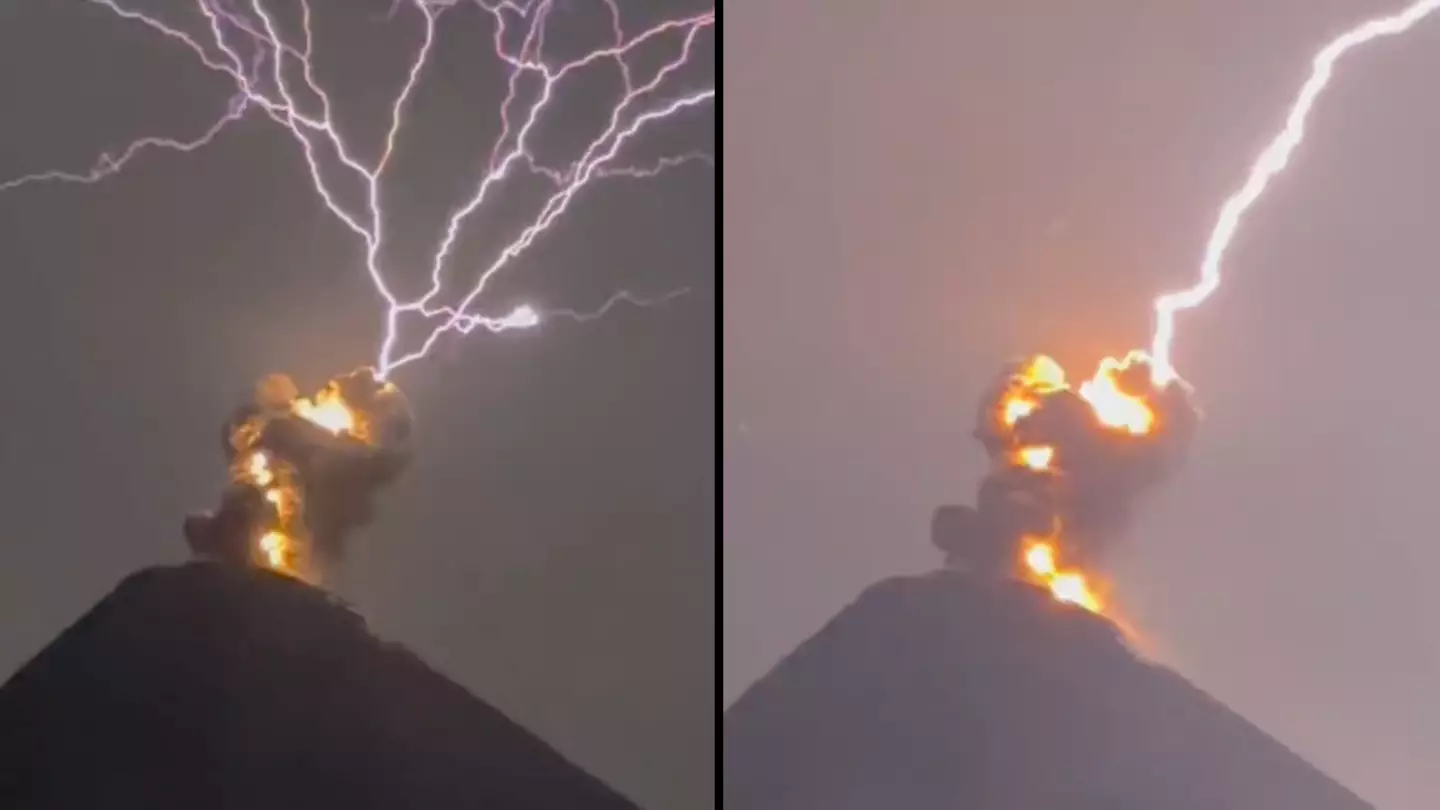
When Mother Nature wants to take charge there’s nothing you can do but sit back and hope for the best.
This was particularly the case with a viral video circulating around social media which shows the very moment molten lava meets lightning.
The two forces collide to make it look like The Undertaker returning to the WWE for the 100th time – and we’re all for it.

Two forces of nature colliding. (Getty Stock Images)
Taking to TikTok, the short clip shows orangey-red lava spilling from the top of the volcano and is hot enough to melt through steel by the way.
Then, out of nowhere, a lightening bolt appears to slash into the lava to create an incredible visual, which is hard to put into words.
But the idea that it’s the lava itself which reacts with the lightening isn’t exactly true.
So, when a volcano erupts it releases ash, gas, and lava into the air.
And the way it works is that the collision and friction between the volcanic particles create static electricity, which, under the right conditions, generates lightning within the volcanic plume.

The video went viral on social media. (TikTok/@brown_watermelon)
This volcanic lightning is sometimes referred to as a ‘dirty thunderstorm’ and it only ever happens in the atmosphere above the erupting volcano.
The lava itself does not cause lightning but contributes to the overall conditions that make this event possible.
Viewers were amazed by the footage, but equally half-expected Cars character Lightning McQueen to pop out as a visual, as he so often does on social media.
“Was I the only one thinking I was going to see Lightning McQueen this was better,” one person commented.
“So clearly I’ve got some trust issues, because I was expecting being tricked by another Lightning McQueen video.. I’m so happy that this time it was a real one,” a second penned.
As a third wrote: “A lifetime of video games has taught me one thing! There is a boss battle going on that mountain top!”
Another added: “Wow… once in a lifetime captured right there… you are truly blessed to have captured this.”
Now, as seen in other videos on social media, this event recently took place at the Volcán de Fuego in Guatemala.
The volcano has erupted in 2018, 2021, 2022 and 2023, as locals watched on from the capital, Guatemala City, 44km (27 miles) south-west of Fuego’s summit.
“Similarly (to a thunderstorm), in a volcanic eruption cloud, there are small particles of volcanic material colliding with one another at high speeds, and these collisions can result in separation of charges in the volcanic cloud that result in lightning,” said scientists at the University of Hawaii’s Center for the Study of Active Volcanoes.
Featured Image Credit: TikTok/@brown_watermelon
Topics: Environment, Science, World News, Viral, TikTok
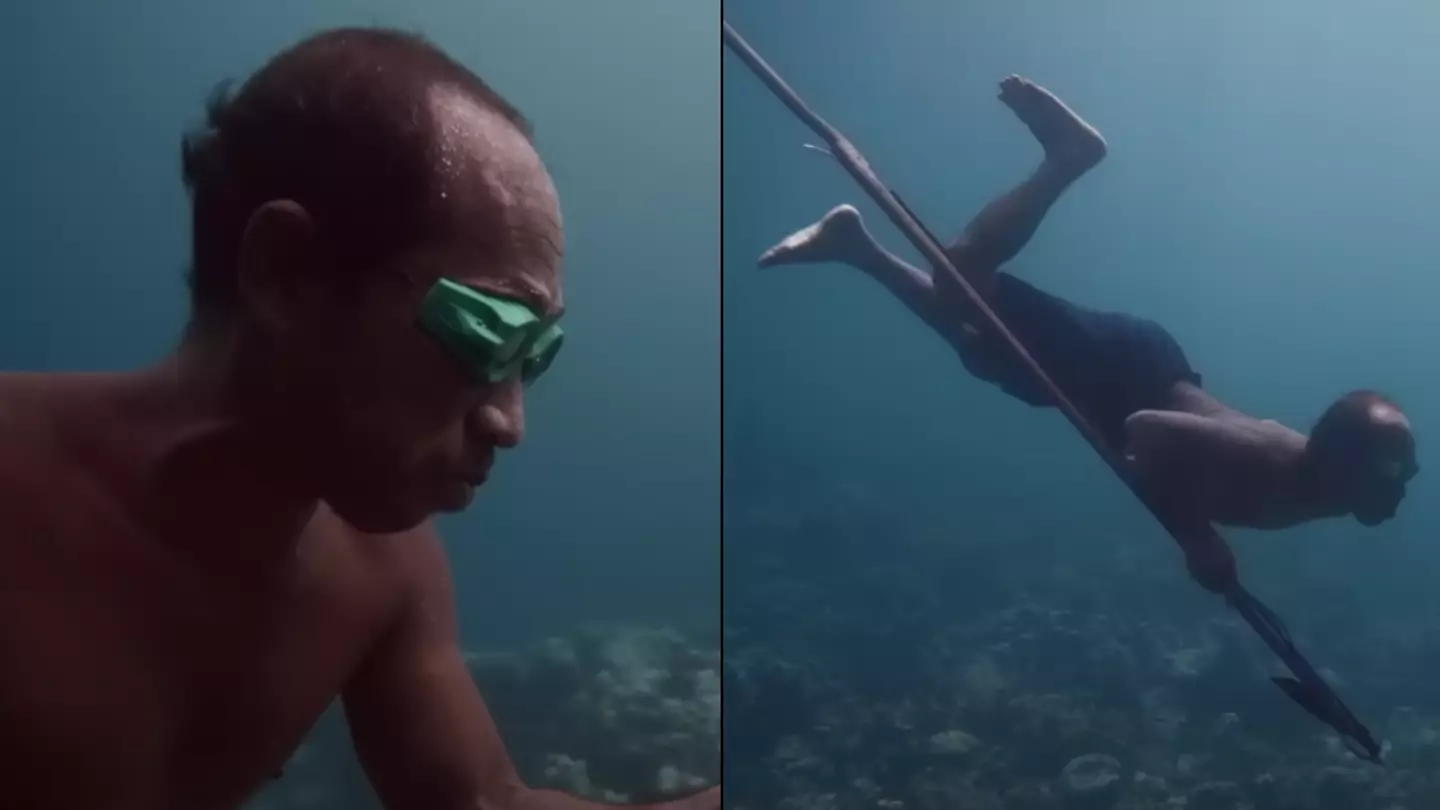
If I asked you which organ was bigger in a tribe of people who for years have spent hours each day diving underwater to the point that their lung capacity is incredible, you’d probably guess it was the lungs.
However, the Bajau people who live across Indonesia, Malaysia and the Philippines are actually better endowed in the spleen department.
For almost 1,000 recorded years they’ve been diving into the sea, having lived off the nature that exists underwater by spearfishing and collecting shellfish.
A study of the Bajau found that they have a ‘mutated gene’ in the form of PDE10A, which correlates with a larger spleen size that helps them stay underwater for longer.
The Bajau can spend hours each day swimming underwater, and can hold their breath for several minutes at a time while also being able to dive down to incredible depths.
The University of Copenhagen’s Melissa Ilardo, one of the authors into the study of the Bajau, told the BBC’s Inside Science programme: “For possibly thousands of years, [they] have been living on house boats, travelling from place to place in the waters of South-East Asia and visiting land only occasionally. So everything they need, they get from the sea.

Diving down with wooden goggles and weights around their wastes, the Bajau have lived for countless generations off the produce of the sea. (BBC Global/YouTube)
“When they’re diving in the traditional way, they dive repeatedly for about eight hours a day, spending about 60 percent of their time underwater. So this could be anything from 30 seconds to several minutes, but they’re diving to depths of over 70m.”
That’s pretty incredible, but you might still be wondering what a mutated gene that gives you a larger spleen has to do with a human’s ability to swim underwater for longer periods at a time.
When you hold your breath and submerge yourself in the water it triggers a dive response, and you can do this to yourself just by submerging your face into cold water.
Triggering this response slows down your heart rate and makes the blood vessels in your extremities smaller in order to preserve supply for your vital organs.
This is where the spleen comes in, as it contracts due to the dive response and Ilardo said it was like ‘a reservoir for oxygenated red blood cells’ that functions ‘like a biological scuba tank’.
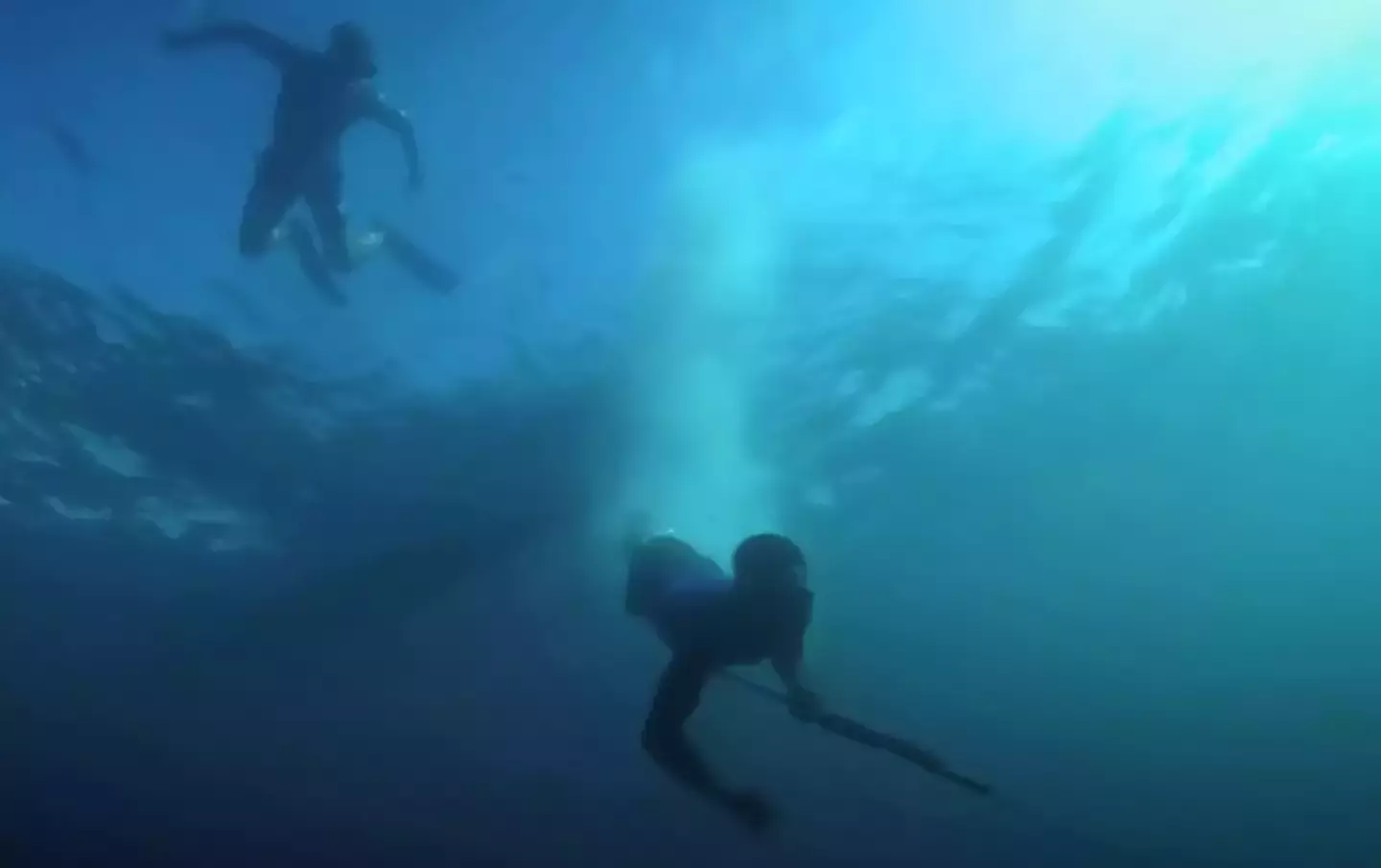
They’re so connected to the sea that their spleens are larger, but sadly they’re also first-hand witnesses to the damage done to our underwater environment. (BBC Global/YouTube)
In fact, her study of the Bajau found that they had spleens that were about 50 percent larger than their neighbours.
Sadly, a life so closely connected to the sea also means they’ve been among the most affected by climate change and ecological devastation of the oceans, as they’re often the first to suffer from things going wrong in the sea.
Damaged coral reefs have affected their way of life and they’ve seen significantly fewer fish in the sea, which is a major danger to people who for centuries have cultivated the ocean’s bounty.
There are also concerns that their culture is suffering in other ways due to the pollution of plastic.
Santarawi Lalisan, an elder statesman of the tribe, told Giuseppe from Project Happiness that their culture is now dying due to Western ways.
He said: “A lot of plastic has arrived here because today the Badjao go to the supermarket and here they use plastic and no longer paper. In the past, the Badjao only used paper when they were buying something.”
Featured Image Credit: BBC Global/YouTube
Topics: World News, Environment, Science

An urgent plea has been issued to sun-loving Brits from those that run an idyllic archipelago loved by those jetting off from the United Kingdom.
There’s no doubting the British obsession with a week or two in the sun. The seven, 10 or 14 day break is what makes the daily slog all worthwhile, with millions of us opting for sandy white beaches, cocktails on terraces, and reading a book by the swimming pool.
But one of the destinations loved the most by UK residents is worried.
And it’s all because of a backlash by those who call it their permanent home.
It comes after locals told Brits and other tourists to, essentially, back off, claiming the locations were at ‘risk of collapse’.
The Spanish islands have seen locals self-police the visitor hot spots because of so-called call ‘tourist overcrowding’.
No, not the Balearics. We’re on about the Canary Islands, which are closer to Africa than Spain itself.
And it’s that location that makes them a firm favourite with Brits, given the consistently hot temperatures experienced on the group of islands.
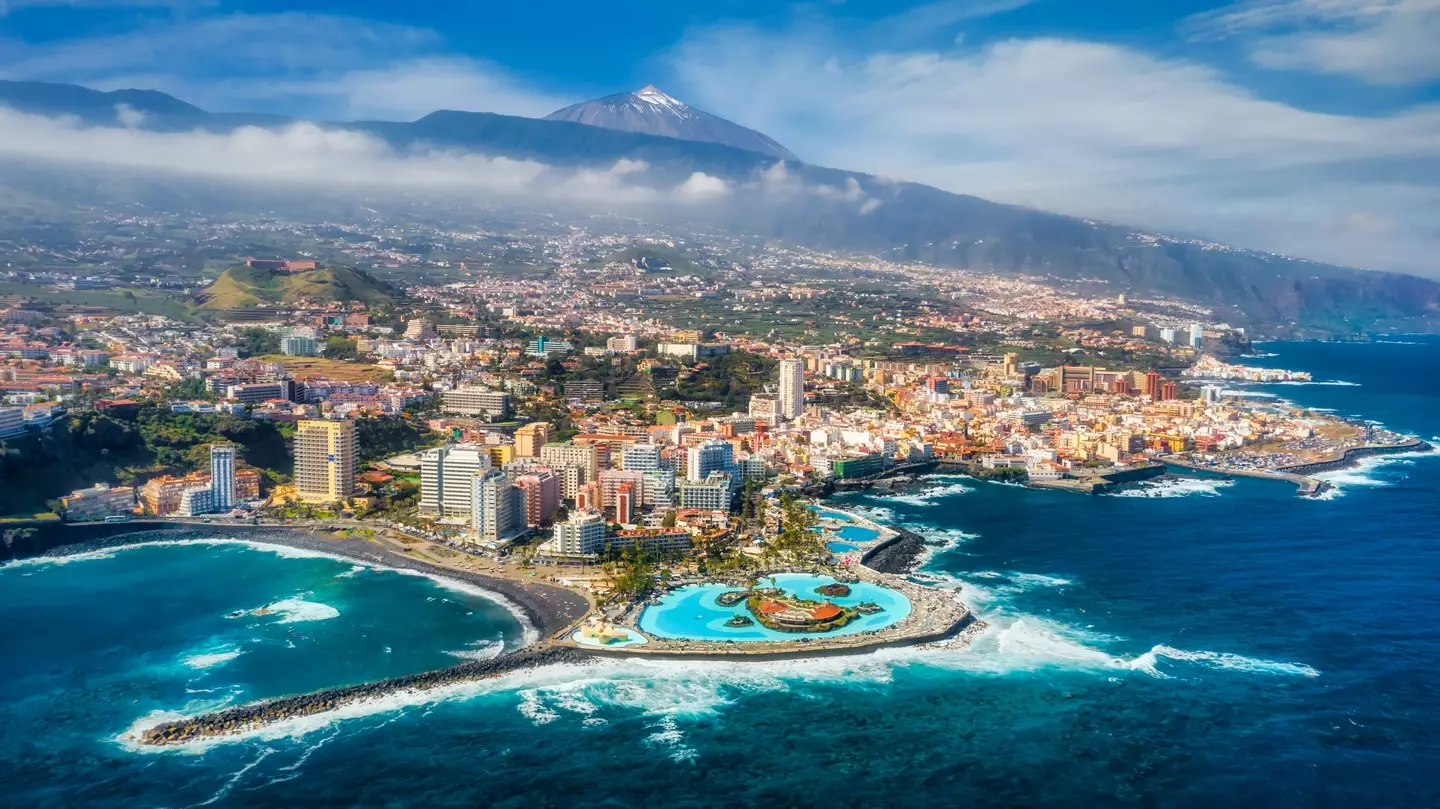
Tenerife from the skies (Getty Stock Images)
But those who run the governance of the islands are worried that the backlash from residents across the likes of Tenerife Lanzarote, and Fuerteventura will be enough to put people off and look elsewhere.
Regional tourism chief, Jessica de León, told the Telegraph that she would be ‘delighted to welcome’ tourists to the islands.
She added: “It is still safe to visit the Canary islands.
“People who come here to visit and spend their money must not be criticised or insulted. We are playing with our main source of income.”
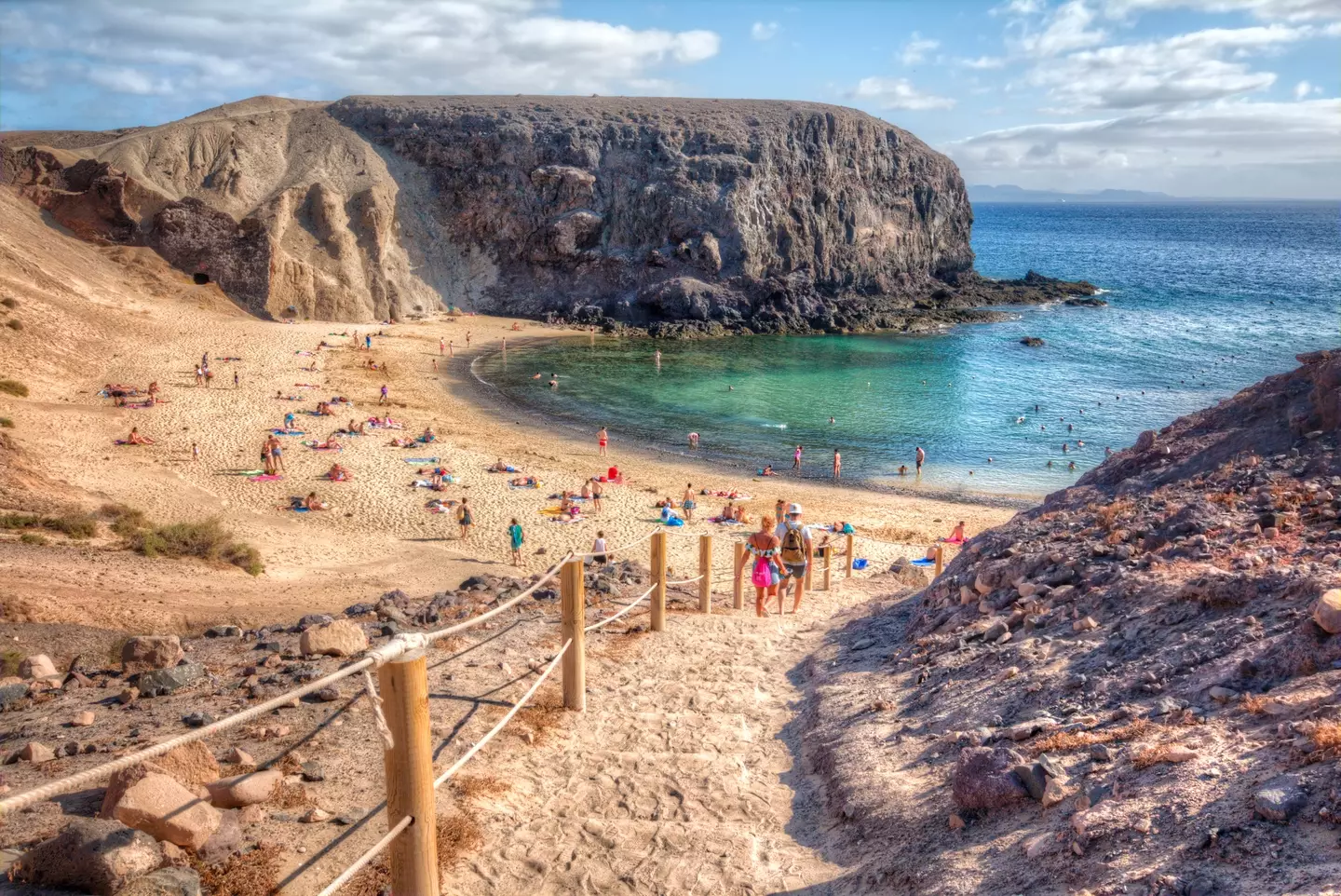
One of the beaches on the southern tip of the island of Lanzarote is Playa Papagayo (Getty Stock Images)
But the political view is not universal, with one councillor Gabriel Gonzalez – from the hard-left Podemos party in Tenerife’s resort town of Adeje – saying: “We have the feeling that we are not living off tourism; it is tourism that is living off us.”
Earlier this month, Canary Islands president Fernando Clavijo asked tourists to keep coming there on holiday.
“We are worried because tourism is our main source of income and I think that whoever comes here to enjoy, to spend a few days and to leave their money in the Canary Islands, shouldn’t be rebuked or face insults,” he said.
Néstor Marrero, secretary of a Tenerife ecology group called ATAN, has said that the number of tourists allowed on the Canaries ‘should be reduced’.
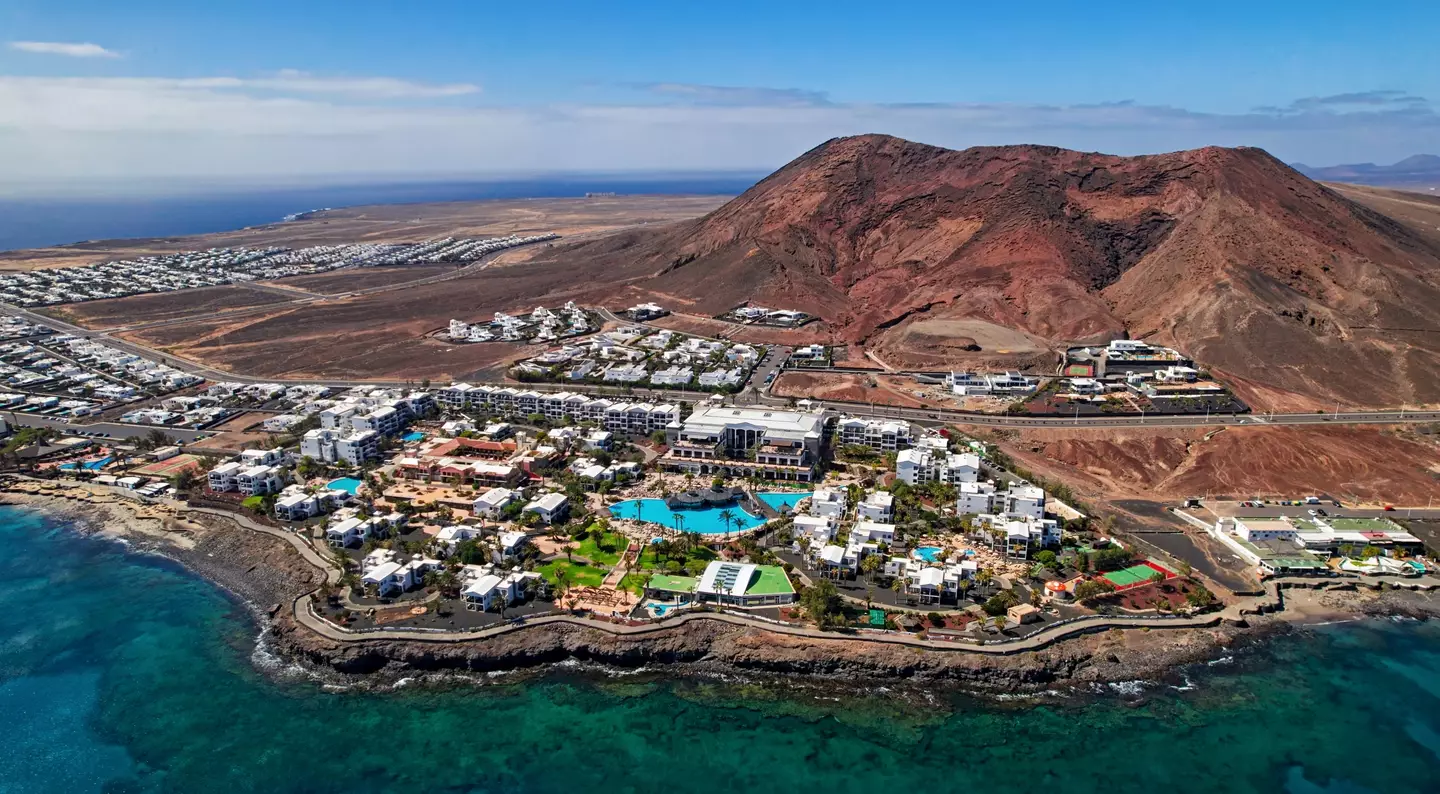
Aerial view of Playa Blanca and Montana Roja, Lanzarote (Getty Stock Images)
Instead of a focus on all-inclusive holidays, Marrero said the aim should be for ‘higher-quality visitors’ who will actually leave their hotels. Savage.
Residents across Lanzarote took to the streets on 20 April in a protest against tourism, chanting ‘Lanzarote has a limit’.
Similar movements have sprung up across Fuerteventura, Tenerife, La Palma, and Gran Canaria.
Whatever your stance, it’s clear that the issue isn’t going away any time soon.
Featured Image Credit: Getty Stock Images
Topics: Holiday, Money, Travel, UK News, World News, Environment, Business
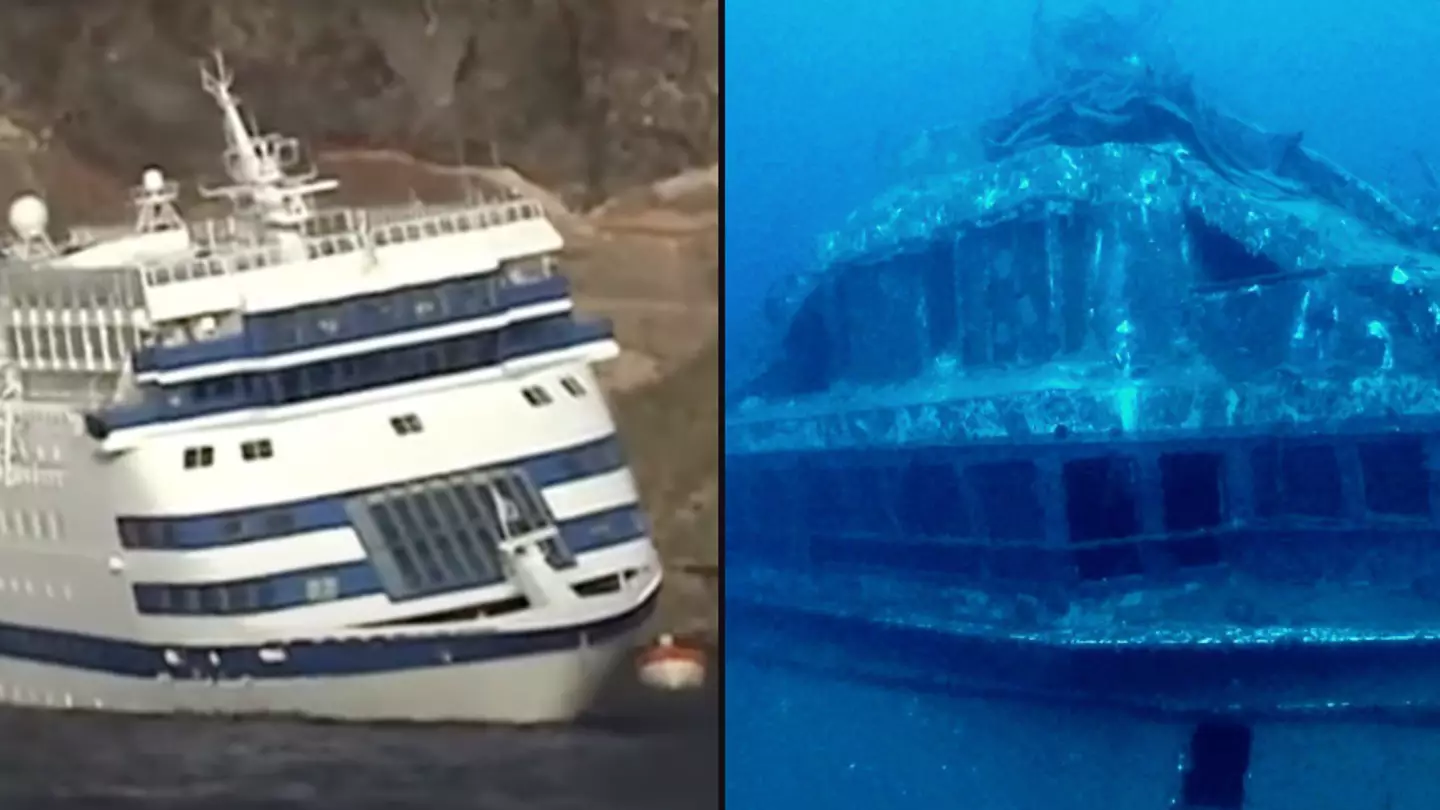
A popular tourist hotspot is under threat from a ‘ticking time bomb’ shipwreck near the coast.
The holiday destination – usually crawling with boozy Brits – is potentially at risk after locals have issued their concerns with an abandoned ship that’s been on the sea floor for 16 years.
Weighing in at 22,000-tons, the 469ft-long ship was built in 1984 by Valmet, Finland for Birka Line as Birka Princess.

Pexels
Unfortunately though, the cruise – named as MS Sea Diamond – sank to the seafloor the day after it set off from the Greek island of Santorini on 5 April 2007.
Although most of the 1,195 passengers were safely evacuated, two passengers were presumed dead after their bodies were never found.
The victims were two French citizens, named Jean Christophe Allain, 45, and his daughter Maud, 16.
Ever since, the ship remained underwater and environmentalists and residents are concerned with the possibility of a ‘incalculable ecological disaster’ occurring.
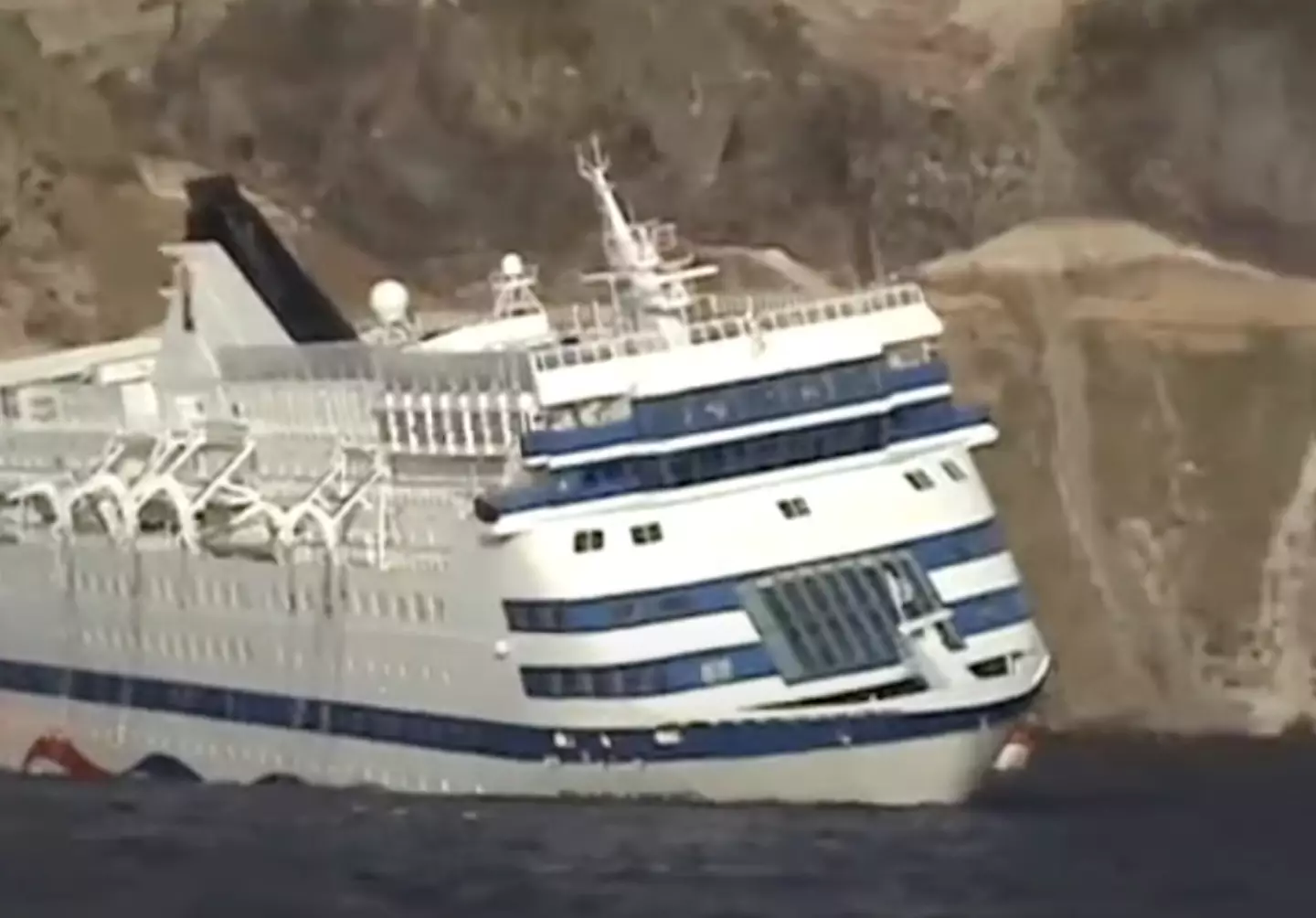
YouTube/@professionalidiot07
Locals have also been worried with the pollution coming from the ship’s fuel tanks.
They issued their concern to the Greek Parliament’s Special Standing Committee for Environmental Protection this week in a letter, calling for the ship to be removed from the seabed.
“The shipwreck remains on the seabed and continues to pollute, at a slow but steady rate, it erodes daily and at any time it can cause an incalculable ecological disaster,” the letter read.
Some experts have predicted that it could at least take at least 400 years for these pollutants to decompose.
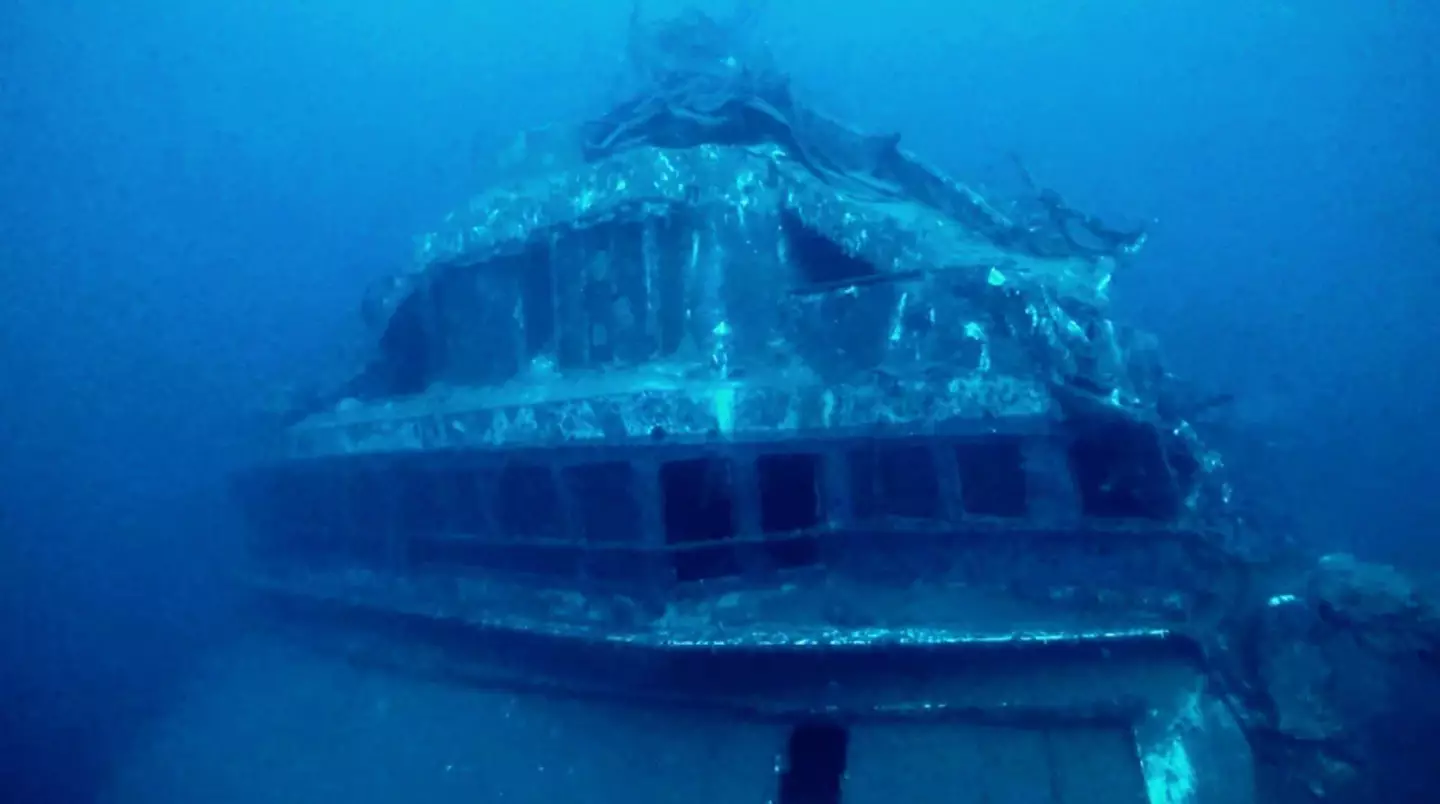
Loucas Lignos, head of the campaign group The Coordinating Committee of Thira Citizens for the Lifting of the Sea Diamond, told The Sun: “The shipwreck is located exactly in the caldera of Santorini, around 800m from the port.
“It is sunk about 100m underwater.
“It has 300 tonnes of fuel oils and other toxic chemicals, machine oils, in the generators, wires that are filled with copper, other materials from PBC and plastic that will slowly be diluted into the water over time.
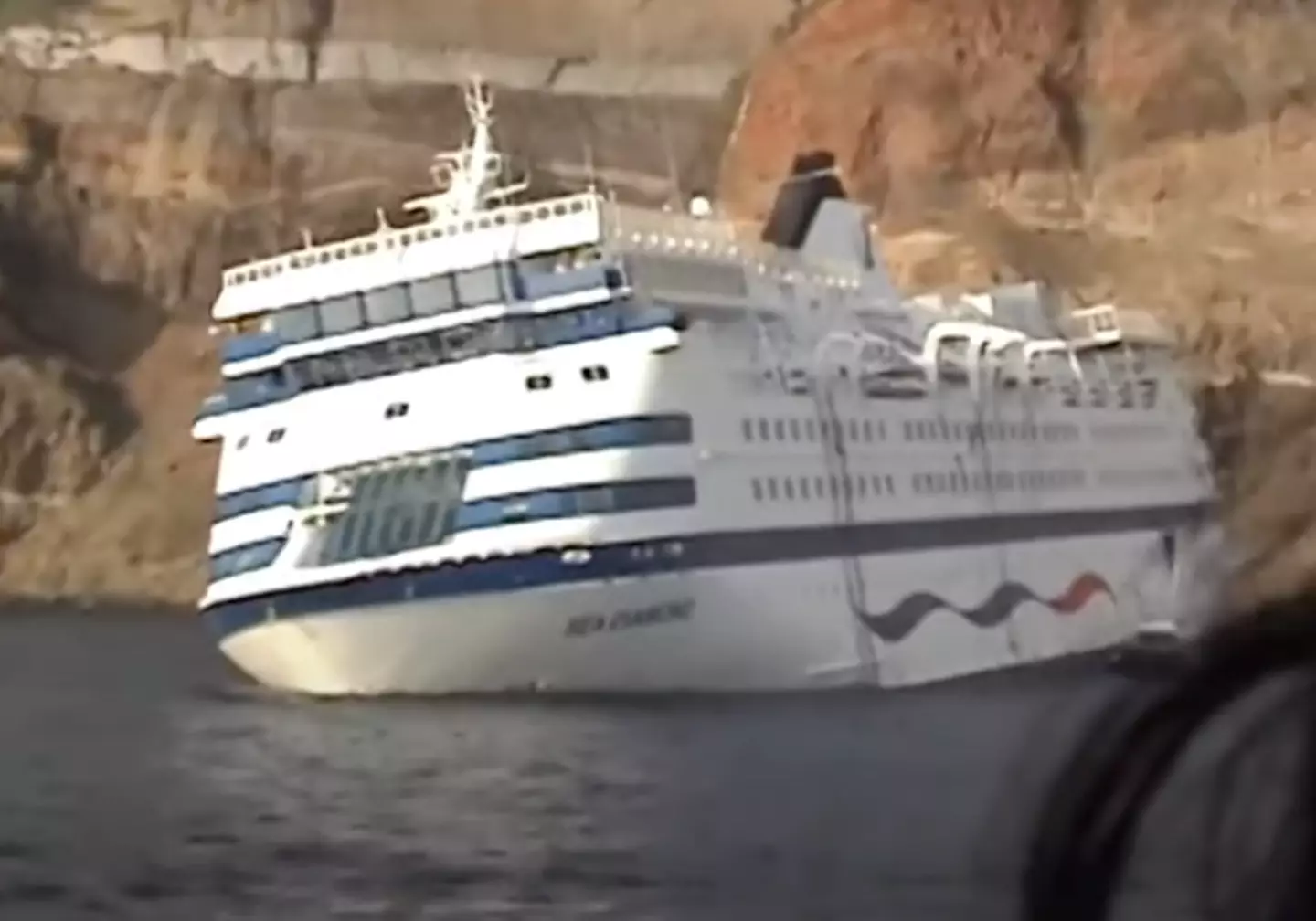
YouTube/@professionalidiot07
“All these carcinogenic substances are dangerous for humans. At the same time, desalination procedures cannot filter through the dangerous heavy metals.
“The main problem is that these chemicals can enter the human body through bioaccumulation- either via desalination of the water or by fish consumption.
“If that happens it will be a huge environmental disaster for the Santorini beaches.”
Featured Image Credit: YouTube/@professionalidiot07 / Reddit/Sirboomsalot_Y-Wing

